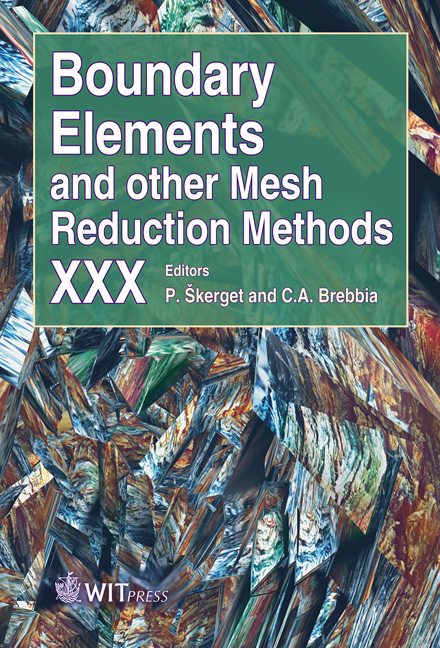Analysis Of Log-periodic Dipole Arrays With Boundary Elements
Price
Free (open access)
Transaction
Volume
47
Pages
10
Page Range
75 - 84
Published
2008
Size
450 kb
Paper DOI
10.2495/BE080081
Copyright
WIT Press
Author(s)
D. Poljak, V. Doric, M. Birkic & D. Kosor
Abstract
The paper deals with a frequency domain analysis of a log-periodic dipole array (LPDA) antenna using boundary element analysis. The mathematical model is based on the set of corresponding coupled Pocklington integro-differential equations. Once the current distribution along the wires is obtaining, it is possible to determine the radiation characteristics of LPDA. The set of coupled Pocklington integro-differential equations is handled via the Galerkin-Bubnov scheme of the Indirect Boundary Element Method (GB-IBEM). The field irradiated by LPDA is also assessed using BEM formalism. Keywords: log-periodic dipole arrays, set of Pocklington equations, boundary elements, frequency domain analysis. 1 Introduction A log-pariodic antenna is a radiating system having a structure providing that its impedance and radiation properties repeat periodically as the logarithm of frequency [1, 2]. As the variations over a wide frequency range of interest are negligible, log-periodic antennas are usually considered to be frequencyindependent. These antennas operate in the VHF and UHF bands thus covering the frequency range from 30MHz to 3GHz. The log-periodic dipole array (LPDA) antenna is a series-fed array of parallel straight wires having successively increasing lengths outward from the feeding point at the apex. There are smaller elements in front of and larger elements behind each dipole thus producing a directional primary pattern in the same way as a Yagi antenna. Contrary to the Yagi-Uda array where only one element of the array is directly fed, while the other wires operate in a parasitic mode, all the elements of the LPDA are connected to the feeder.
Keywords
log-periodic dipole arrays, set of Pocklington equations, boundary elements, frequency domain analysis.





